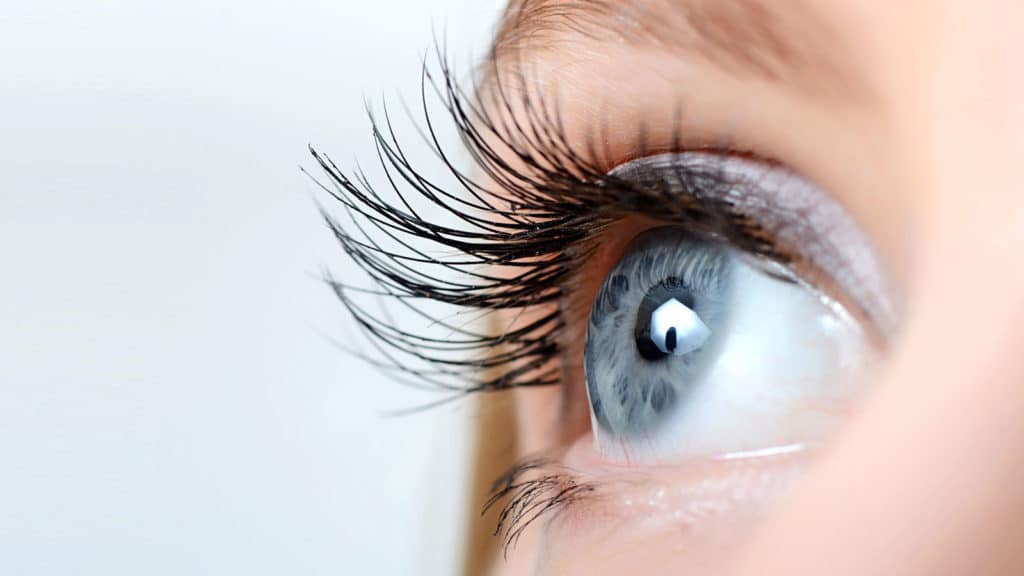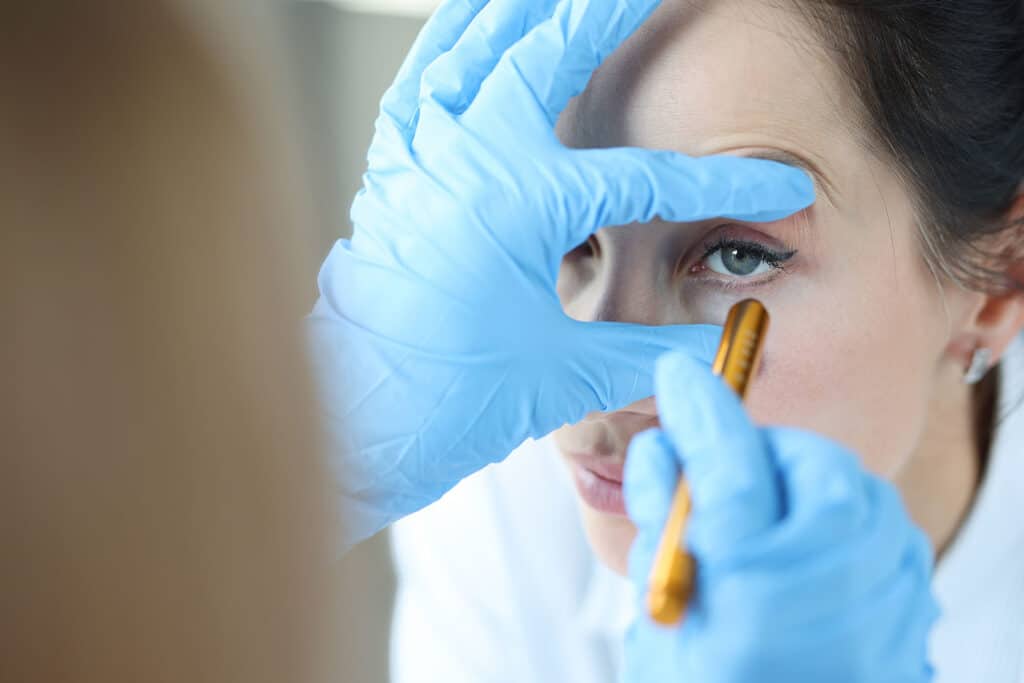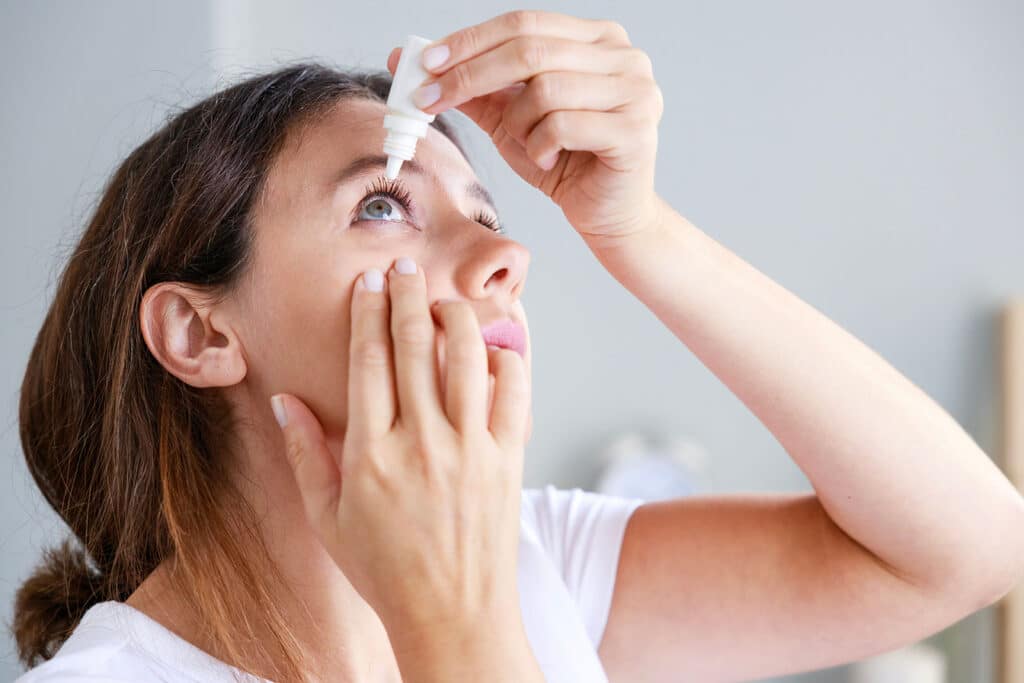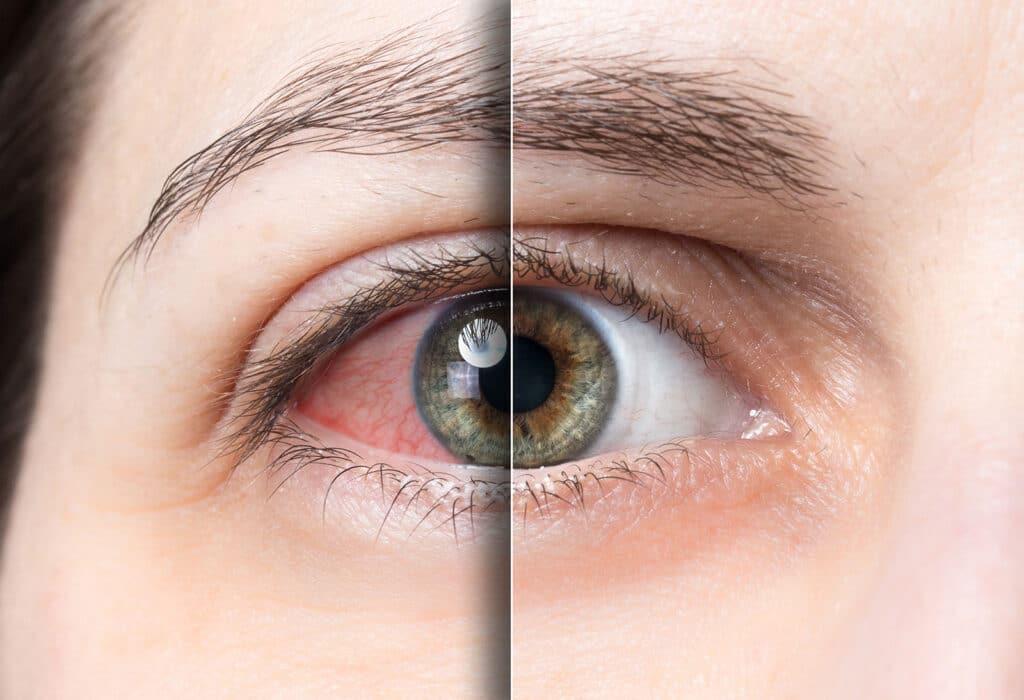Eyes on Shrooms: The Effect of Shrooms and Other Substances on the Eyes
When it comes to substance abuse, the adage “the eyes are windows to the soul” rings especially true.
When a person is under the influence, several changes in the eyes can be observed: they appear bloodshot and dilated, with the pupils moving rapidly and involuntarily.
This article discusses what happens to eyes on shrooms as well as other substances to help you detect signs of addiction early on.

Table of Contents
What Are the Side Effects of Taking Shrooms?
Shrooms, also known as psilocybin mushrooms or magic mushrooms of the genus Psilocybe, are fungi with hallucinogenic properties. When ingested, they can cause short-term and long-term mental health problems and physical effects. They can alter a person’s thinking, senses, and emotions.
Common mental side effects of psilocybin include:
- Distorted sense of reality
- Altered sense of time
- Mixed senses, such as seeing music or hearing color
- Light-headedness
- Anxiety
- Panic attacks
- Changes in mood
- Fear or paranoia
- Confusion and disorientation
- Loss of boundaries
- Impaired judgment
On the other hand, common physical side effects include:
- Exaggerated reflexes
- Numbness, especially on the face
- Dry mouth
- Nausea
- Vomiting
- Excessive sweating
- High body temperature, followed by chills
- Increased heart rate
- Increase blood pressure
When taken in high doses, users may experience what’s called a “bad trip.” These experiences are often frightening and may include a distorted sense of self, loss of boundaries, paranoia, abrupt flashbacks, and impaired judgment. Bad trips can also lead to risk-taking behavior, which may result in traumatic injuries and, in some cases, death.
Users who take shrooms alongside other substances like amphetamines, cannabis, and alcohol elevate the risks of serious side effects. The same is said for users with existing psychiatric conditions.
With users with existing heart disease, short-term effects like increased heart rate and blood pressure could potentially result in cardiac arrest.
Can Shrooms Induce Permanent Pupillary Changes?
The long-term effects of shrooms have yet to be thoroughly investigated. However, some studies suggest that shrooms can induce pupillary changes in users.
In a study published in the Center for Neuropsychopharmacology, researchers found that psilocin and psilocybin, which are substances present in magic shrooms, are structurally related to the “feel good” neurotransmitter receptor serotonin. It’s concluded that shrooms can increase the levels of serotonin in the brain, which can result in the dilution of pupils.

The permanence of such dilation is debated across all fields.
In a case report that reviewed the long-term effects of Novel Psychoactive Substances (NPS), a patient with a history of substance use and misuse developed permanently dilated pupils in both eyes.
It is said that the dilation correlates with the repeated and long-term use of hallucinogens, particularly LSD (acid) and psilocybin mushrooms. The condition started at age 11, shortly after she started using, so it wasn’t congenital but rather acquired.
“Certain pathophysiological changes can influence the pupillary aperture,” said medical doctor and researcher Dr. Ahmed Al-Imam. Some of these pathophysiological changes can be triggered by psychedelic drugs.
Neurological exams failed to detect any abnormalities outside the dilated pupils, so the dilution was unlikely to have been caused by existing neurological disorders.
Dr. Ahmed Al-Imam’s case is one of the few cases that documented the long-term effects of psychedelics, NPS, and other psychoactive chemicals. While permanent dilution is still non-conclusive, the study shows that it can’t be ruled out completely.
Other Substances That Cause Pupillary Changes
Shrooms aside, there are a number of drugs and substances that can trigger pupillary changes. These are as follows:
Marijuana
Marijuana, also known as cannabis, contains a psychoactive constituent called tetrahydrocannabinol (THC).
THC lowers blood pressure, triggering the increase of blood flow and the dilation of blood vessels. Lowered blood pressure causes the blood vessels in the eyes to expand, leading to redness or bloodshot eyes.
Marijuana also slows down the brain’s image-processing function. Under the influence of marijuana, hand-eye reflexes are reduced, and spatial perception is disrupted.
Pupil dilation provoked by cannabis can create imbalances and dazzlements between far vision and near vision. This effect is especially apparent among those who wear multifocal contact lenses and those who have had laser surgery such as Lasik, PRK, Lasik, Relex, or Smile.
Methamphetamine
Meth users often develop “meth eyes,” a term that describes a wide range of signs and symptoms associated with meth abuse. These symptoms include dilated pupils, bloodshot eyes due to increased visibility of blood vessels, and yellow eyes.
Meth can also cause Crystalline retinopathy, which refers to a group of disorders associated with crystal deposits in and/or around the retina.
Crystalline retinopathy is what causes the yellowing of the eyes of meth users, often a result of intranasal methamphetamine use (i.e., administered by way of the nasal structures). If left without treatment, Crystalline retinopathy can cause:
- Sensitivity to light
- Night blindness
- Deteriorating vision
- Uncontrollable twitching of the eyelids
Other effects of meth on the eyes include rapid eye movement, blurred vision, and retinal vein occlusion (RVO), one of the most common causes of vision loss worldwide.

Cocaine
Dilation is one of the more noticeable effects of cocaine use.
Cocaine is a stimulant, meaning that it can trigger the release of chemicals and endorphins in the brain. Among these chemicals is norepinephrine, a neurotransmitter that can cause pupil dilation due to it activating the body’s “fight-or-flight” response.
Bloodshot eyes are another common effect of cocaine use. Like marijuana, cocaine causes blood vessels to constrict, which then increases blood pressure. This results in bloodshot eyes that can last anywhere from a few hours to several days after use.
Over time, cocaine abuse can lead to an array of eye conditions, including:
- Exophthalmos: Bulging or protruding eyeballs
- Cycloplegia: Paralysis of the ciliary eye muscle
- Upper eyelid retraction: Increased resting position of the upper lid
- Corneal ulcers/injuries: Open sore on the cornea
Alcohol
Short-term exposure to alcohol can lead to dilated pupils, blurry vision, and night blindness.
Alcohol can likewise alter a person’s ability to perceive contrast. Consuming alcohol above the legal limit of 0.05% affects a person’s ability to visually adjust to the brightness, making distinctions between bright objects like stoplights more difficult.
Regular consumption of alcohol can result in dry eyes and eyelid twitching (myokymia). Myokymia can trigger short-term double vision and inflammation, which can cause itchy eyes, light sensitivity, and migraines. It can also cause the blood vessels of the eyes to expand, making them appear red and bloodshot.
Long-term consumption of alcohol can trigger the development of premature cataract formation, permanent blurriness caused by the weakening of eye muscles, retinal bleeding from vascular occlusions, and, in severe cases, optic neuropathy.
Left untreated, optic neuropathy can lead to reduced color vision, decreased peripheral vision, and, eventually, complete loss of vision.
Opioids
Opioids are a class of drugs that contain active ingredients derived from the naturally-occurring poppy plant Papaver somniferum. These drugs include heroin, codeine, meperidine, methadone, and morphine, as well as prescription opioids such as fentanyl, hydrocodone, pentazocine, and oxycodone.
Opioids stimulate the parasympathetic nervous system, which can result in the decreased velocity of pupil dilation when eyes come in contact with light. In other words, opioids can impair the pupil’s response to light.
These drugs may also trigger several eye abnormalities, such as droopiness, temporary blurred vision, and double vision.
If used long-term, opioids can cause several retinal issues, such as eye infections, which can lead to photophobia and vision loss.

MDMA
MDMA (methylenedioxymethamphetamine), otherwise known as Molly or Ecstasy, is reported to cause severe eye problems and complications like retinal hemorrhage and intravascular thrombosis.
Retinal hemorrhage occurs when blood vessels in the retina begin to bleed, while intravascular thrombosis occurs when the body is affected by inflammation from an infection, injury, or illness.
These complications are associated with the long-term use of MDMA. MDMA elevates noradrenaline levels, thereby provoking hypertension and tachycardia
The short-term effects of MDMA, though less severe, shouldn’t be understated. Much like the substances on this list, MDMA can cause pupil dilation, blurriness, and distorted perception. It can also cause redness and rapid quivering of the pupils (nystagmus).
Benzodiazepines
Known for their calming effects, benzodiazepines, also known as benzos or BZDs, are used to offset the side effects of withdrawal, reduce seizures, and produce sedation and hypnosis. In this way, they’re often classified as a type of tranquilizer.
Common names of benzos include Valium, Xanax, Ativan, Halcion, and Klonopin.
Because of their potency and availability, benzos are easily abused. At recreational doses, they can cause blurry, altered, or double vision and dilated pupils, with the latter being a sign of an overdose. Other symptoms of overdose include ataxia, slurred speech, and altered mental status.
When taken with alcohol or other drugs, respiratory depression resulting in a coma can occur.
Wrap Up
Whether it’s shrooms, meth, benzos, or alcohol, pupil dilation and bloodshot eyes/redness are the biggest tell-tale signs of substance abuse.If someone you know appears to have enlarged pupils and bloodshot or glassy eyes, checkout clinicalTrials.gov and watch out for accompanying symptoms of addiction. This is important because as the symptoms progress, they’ll become harder to treat.

